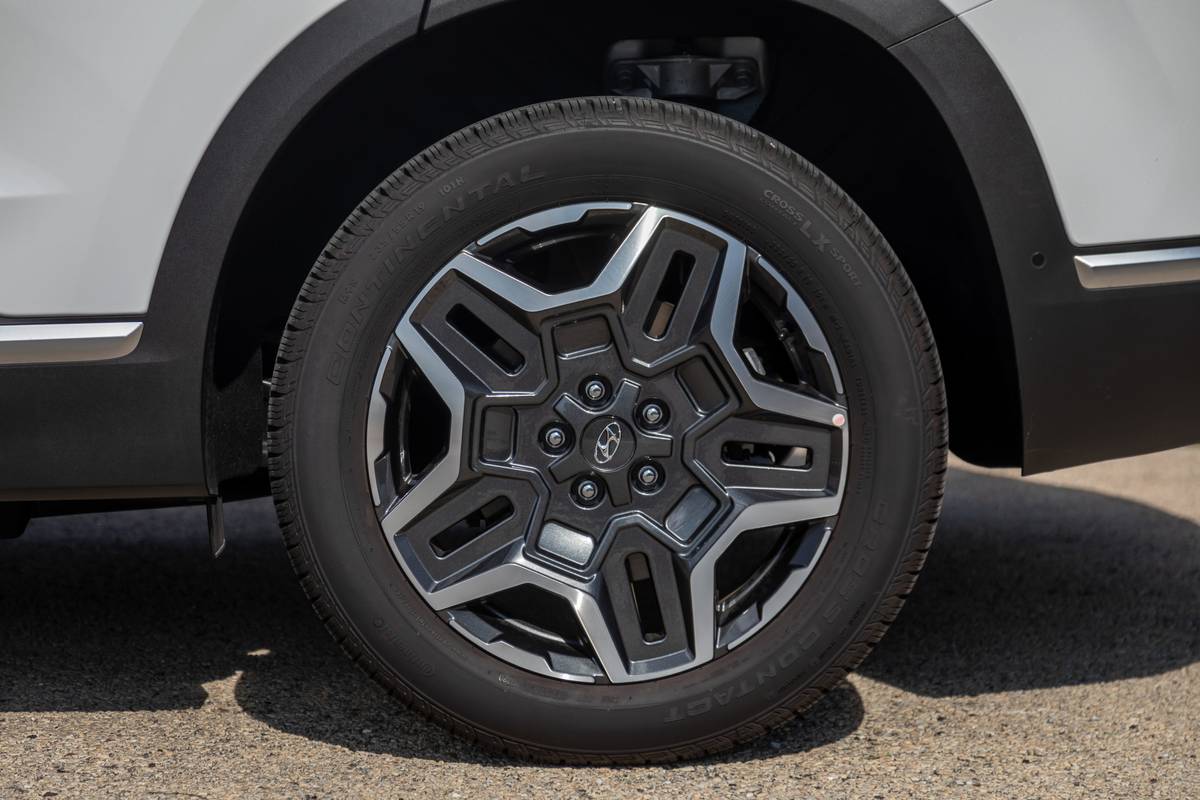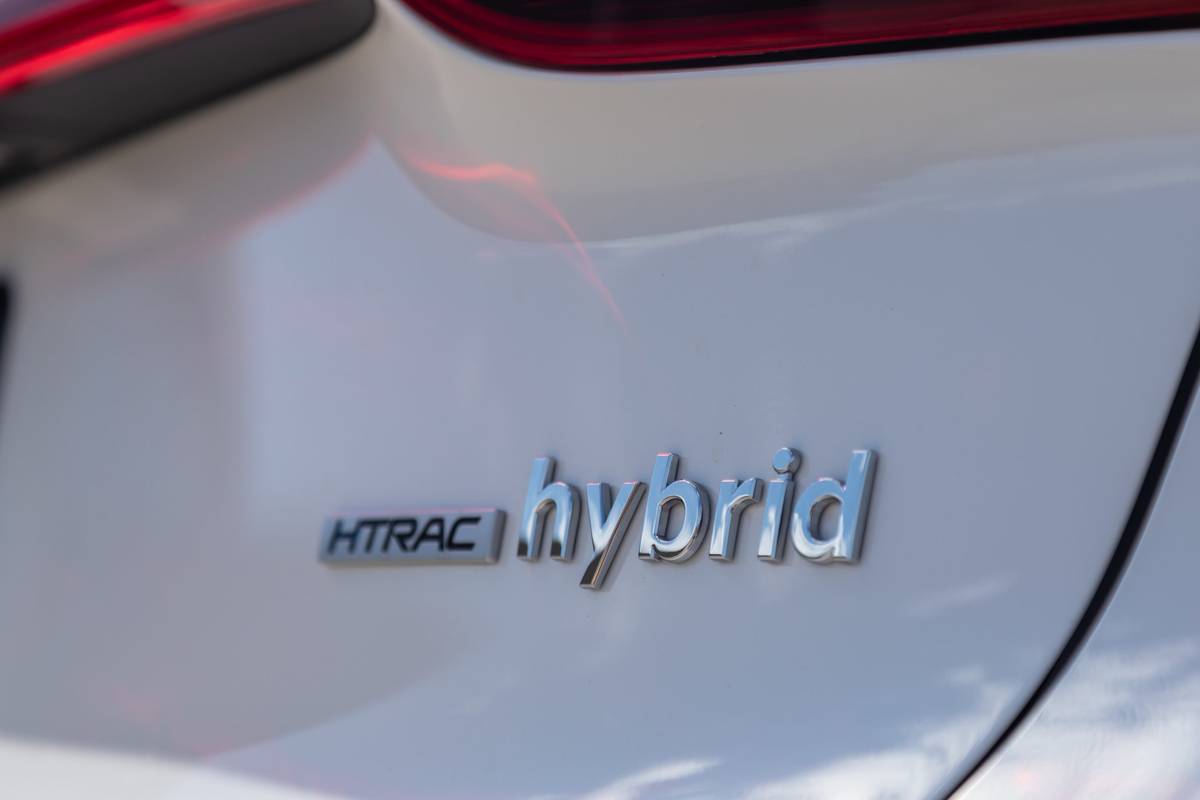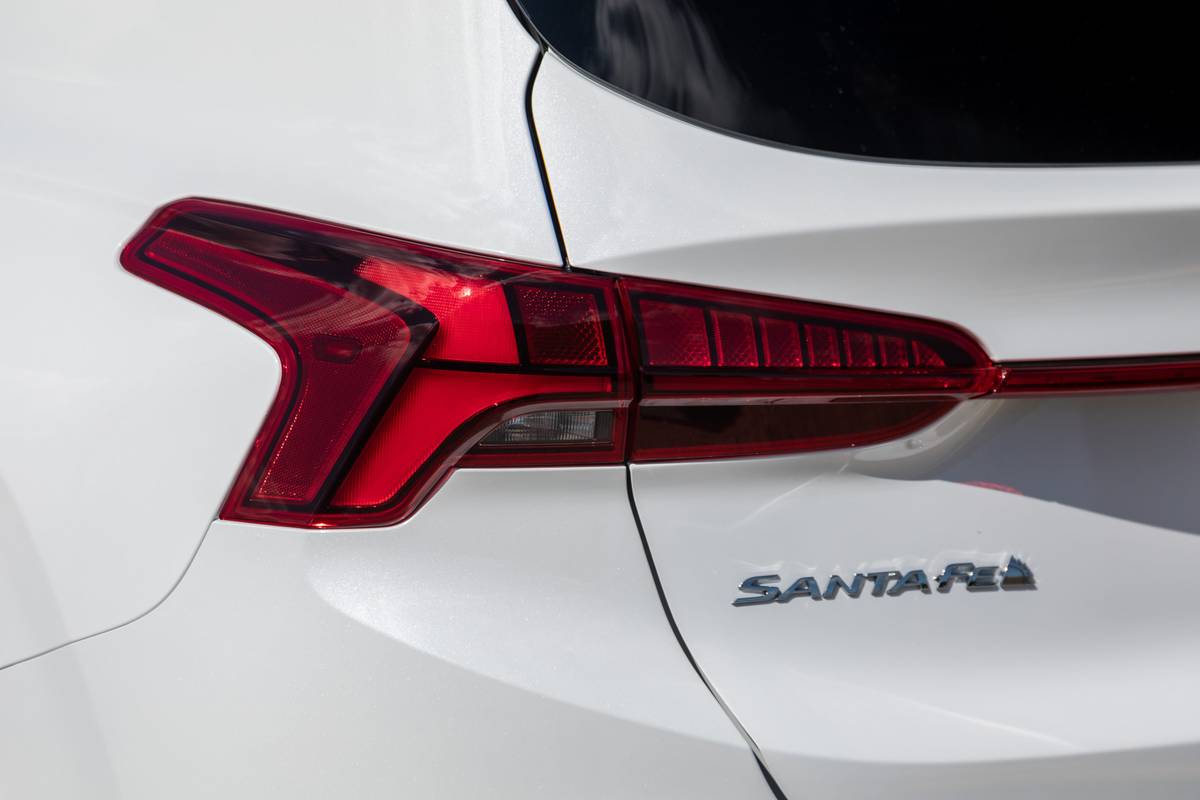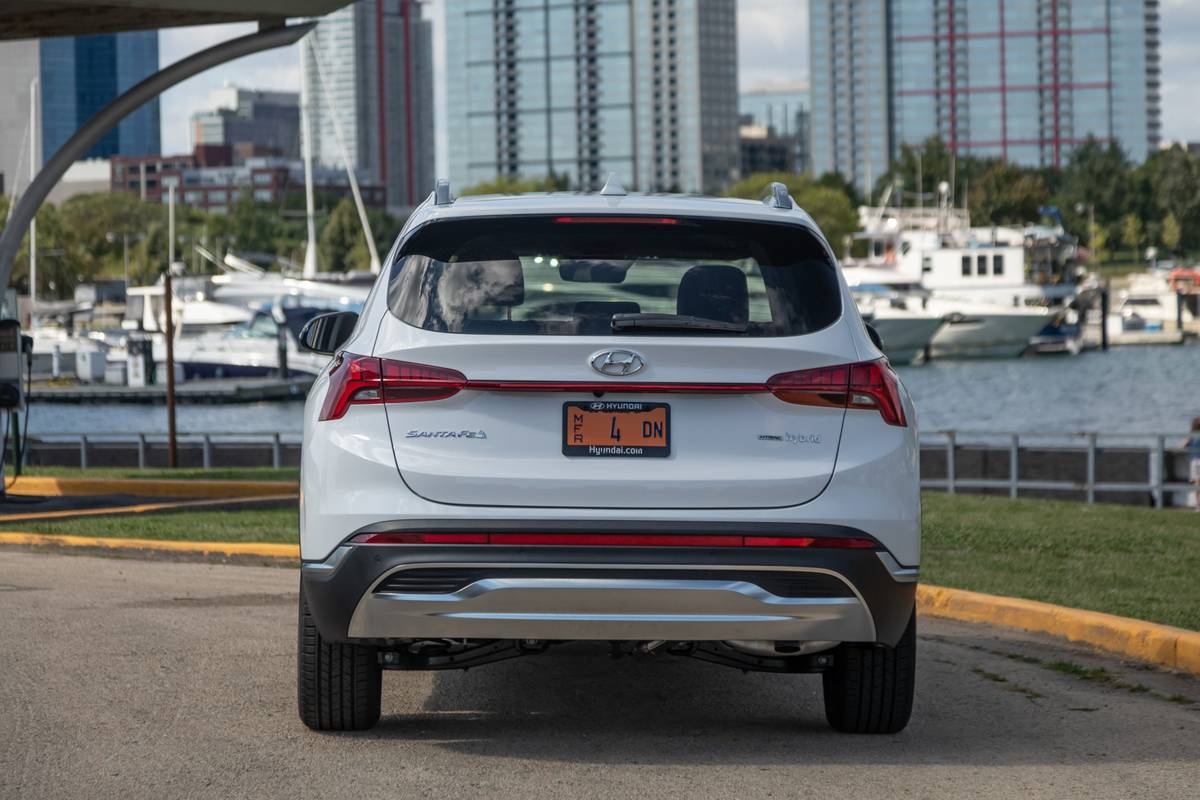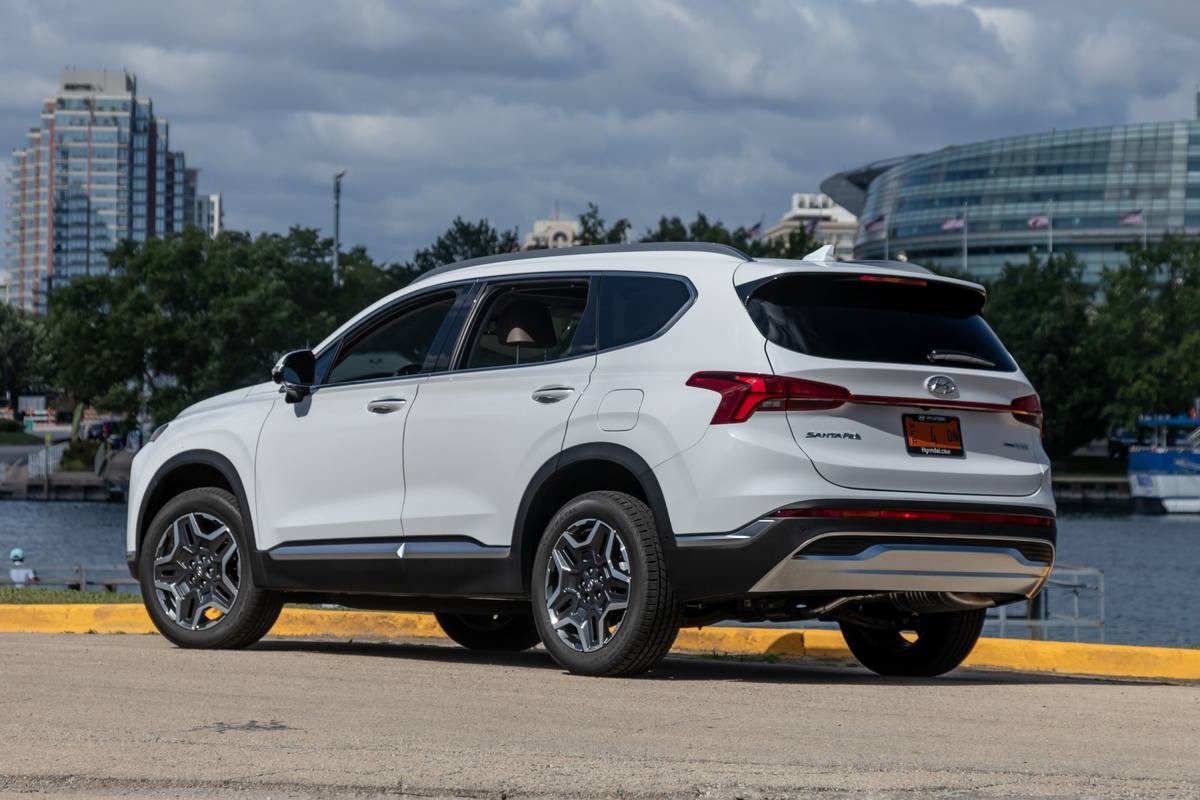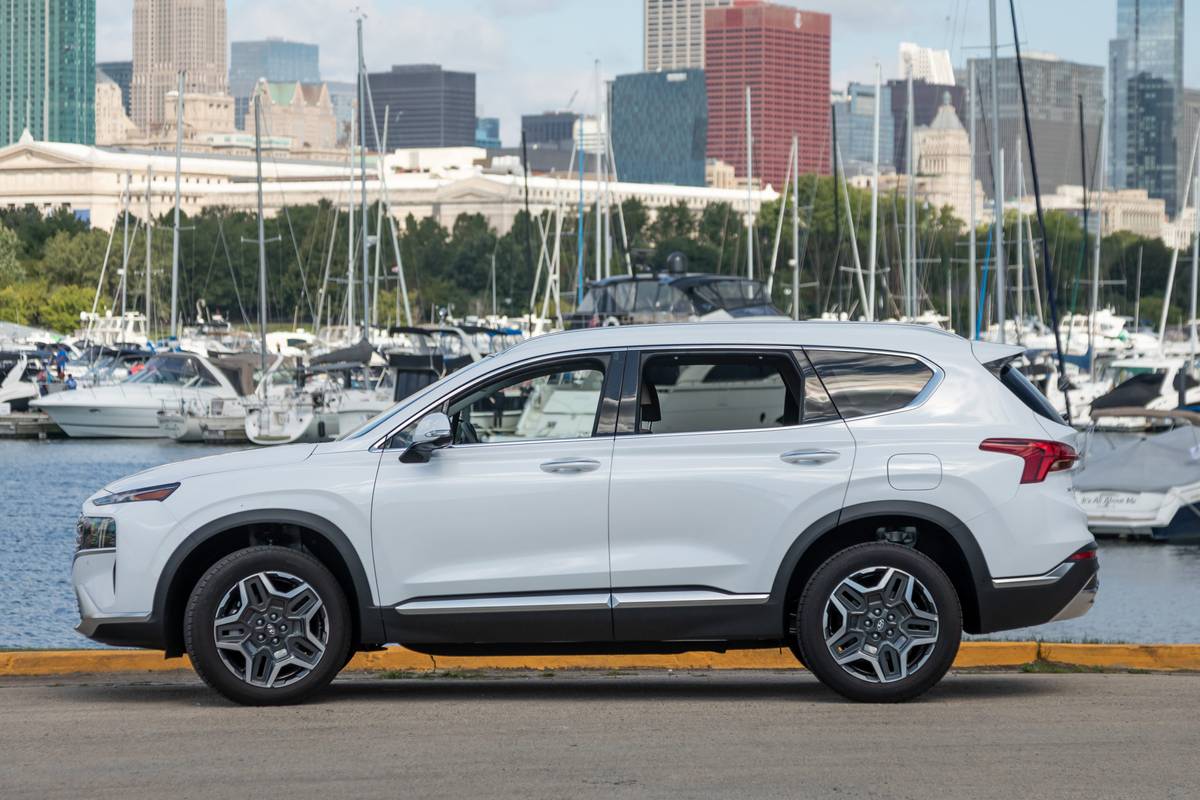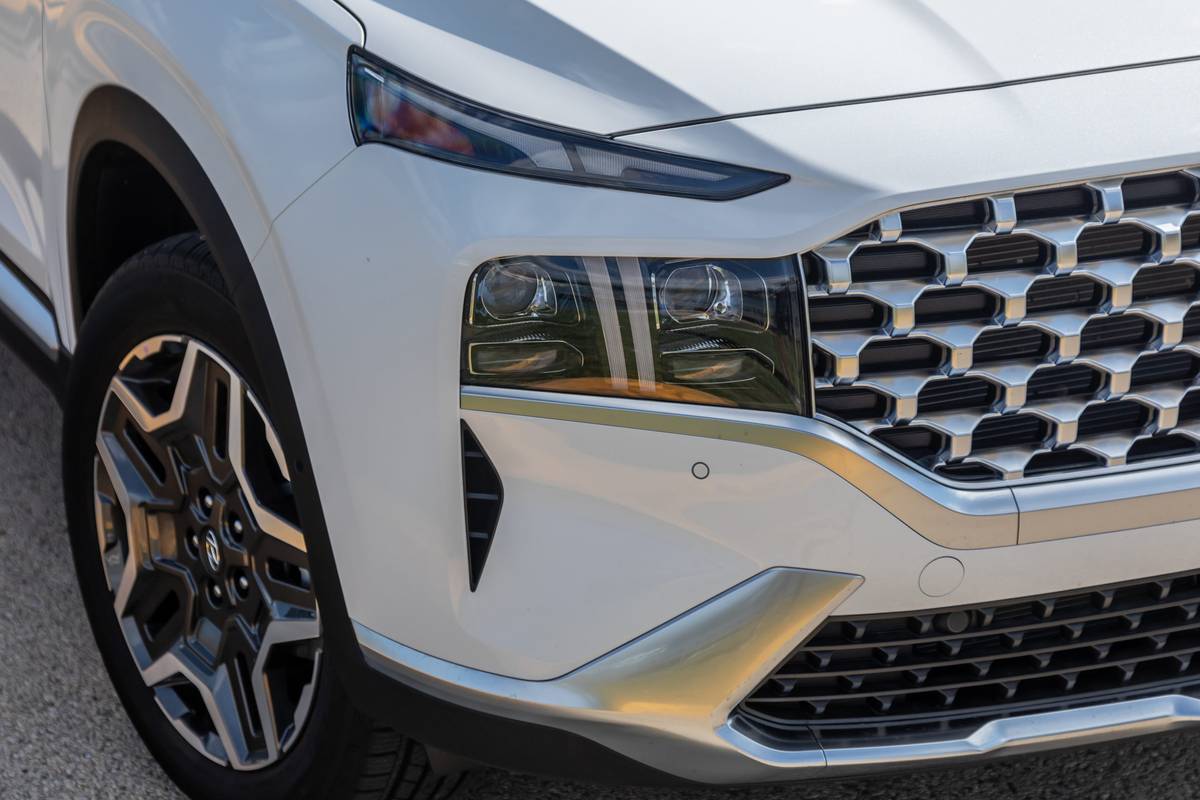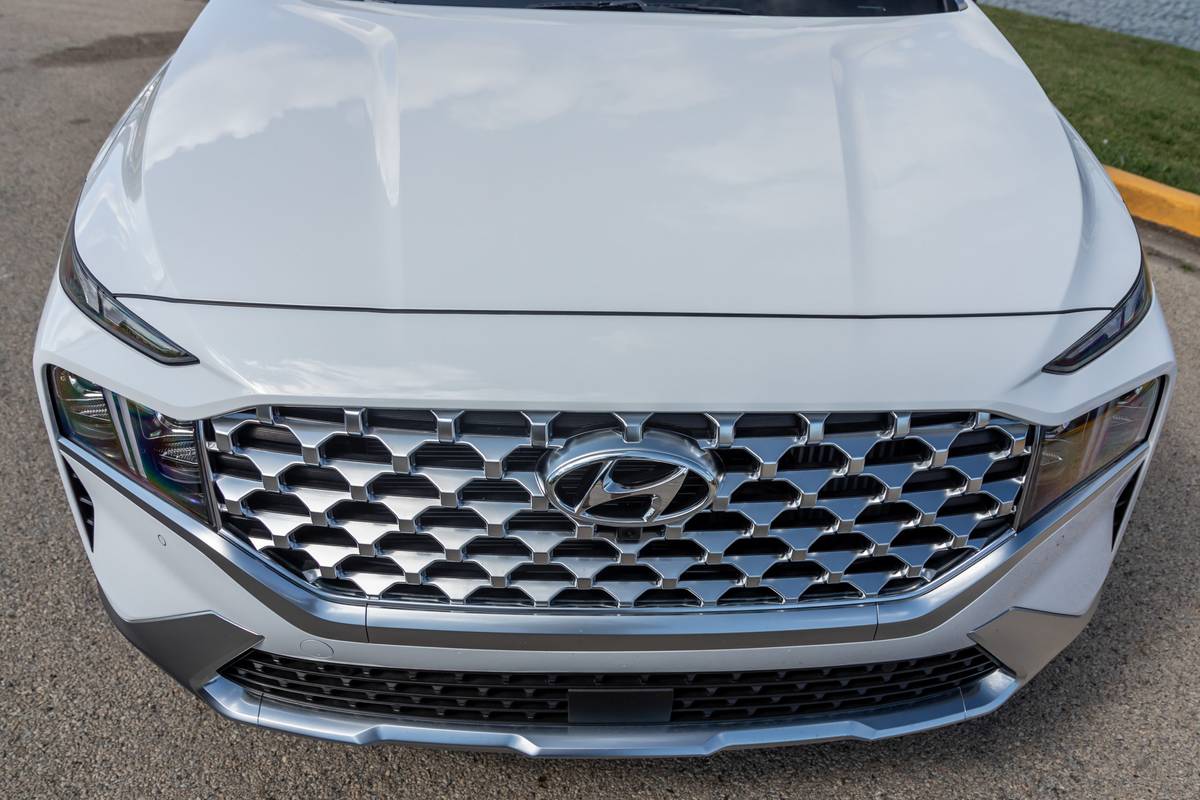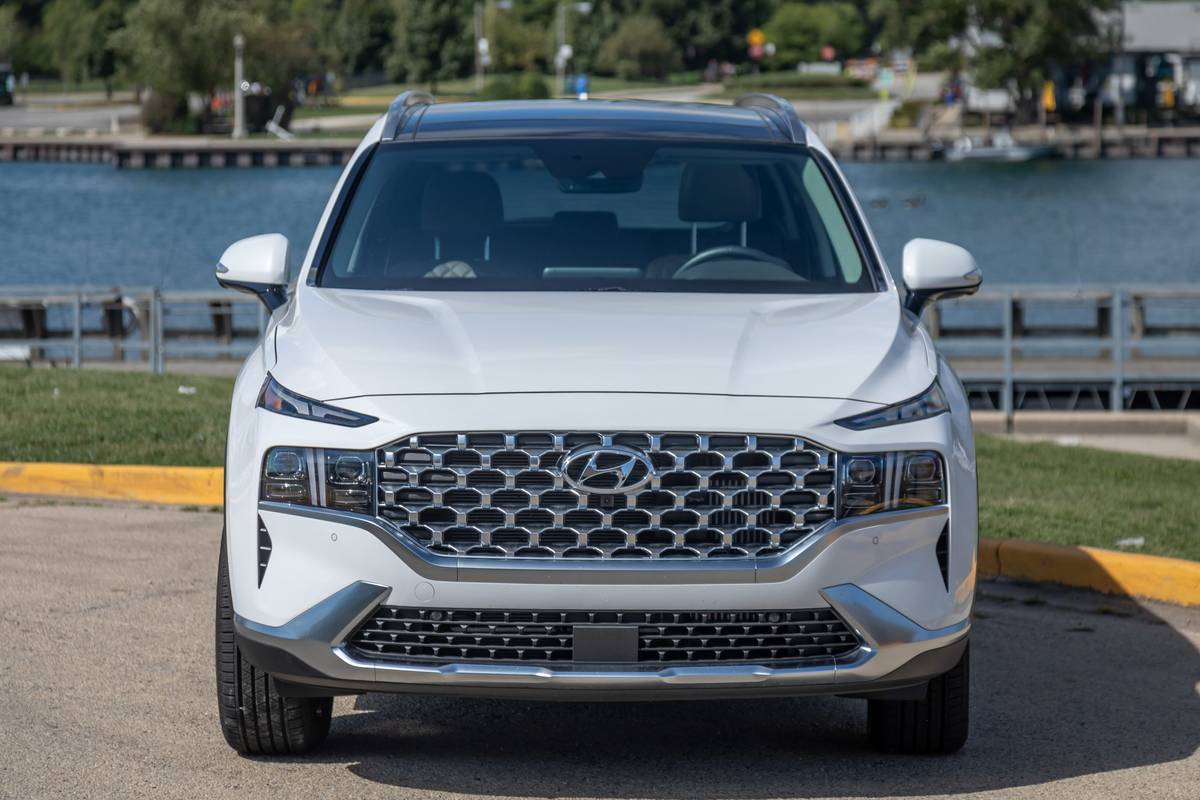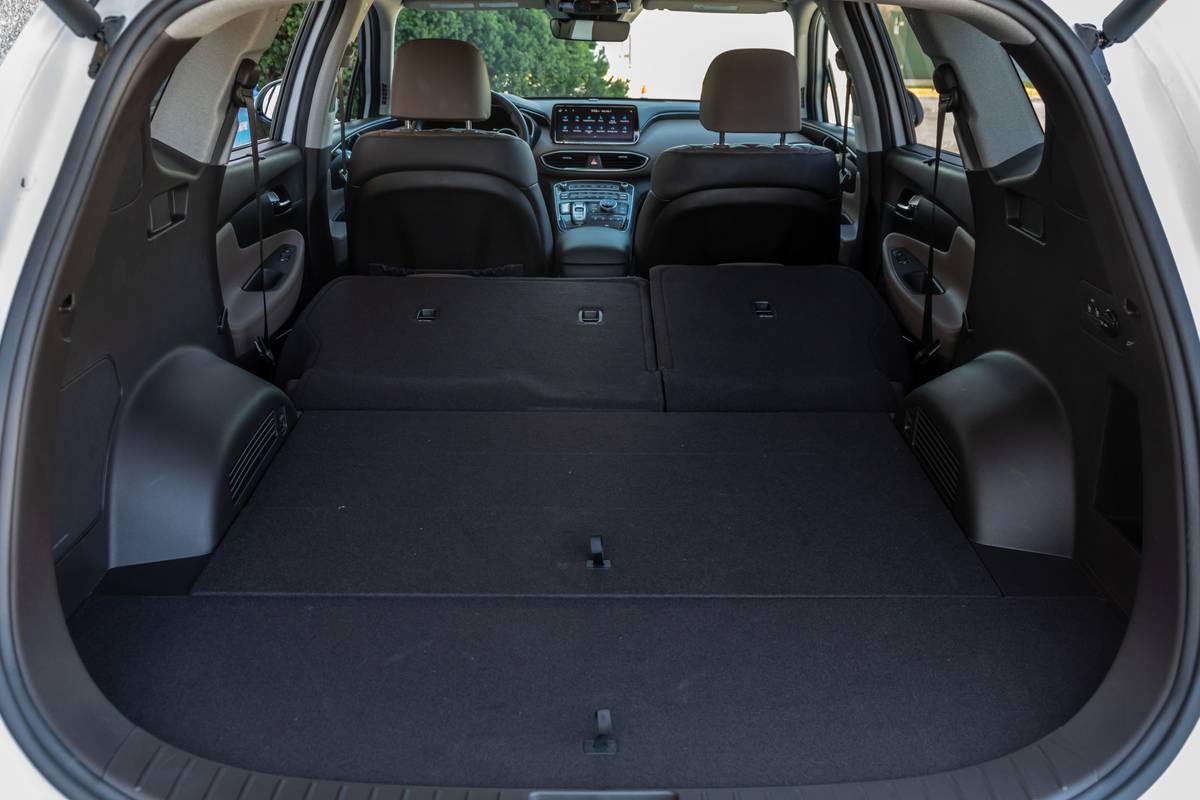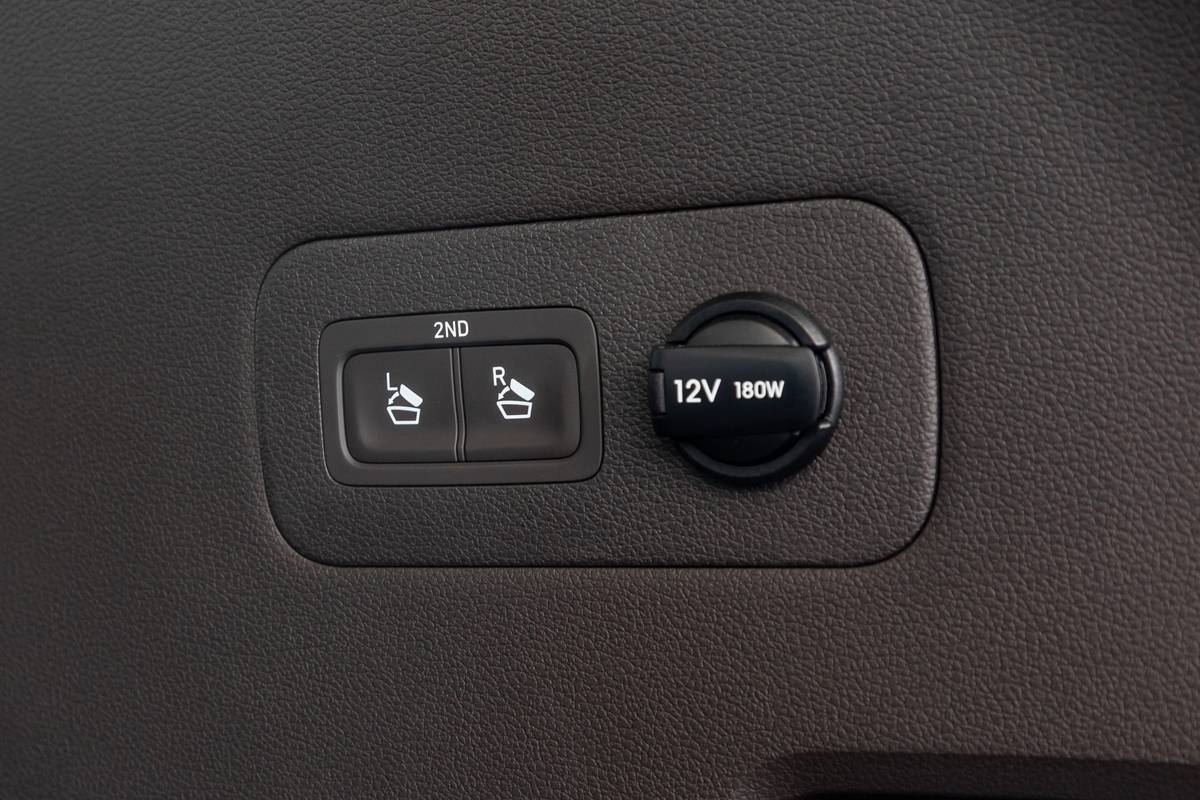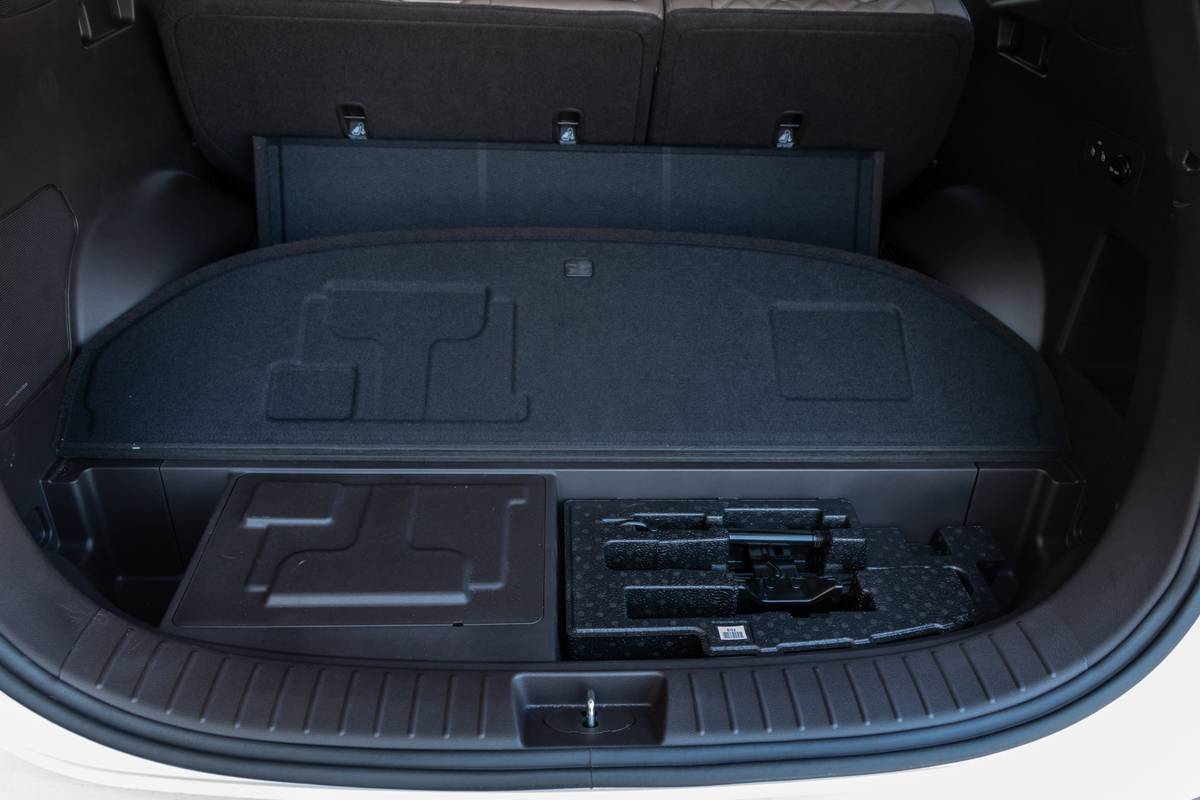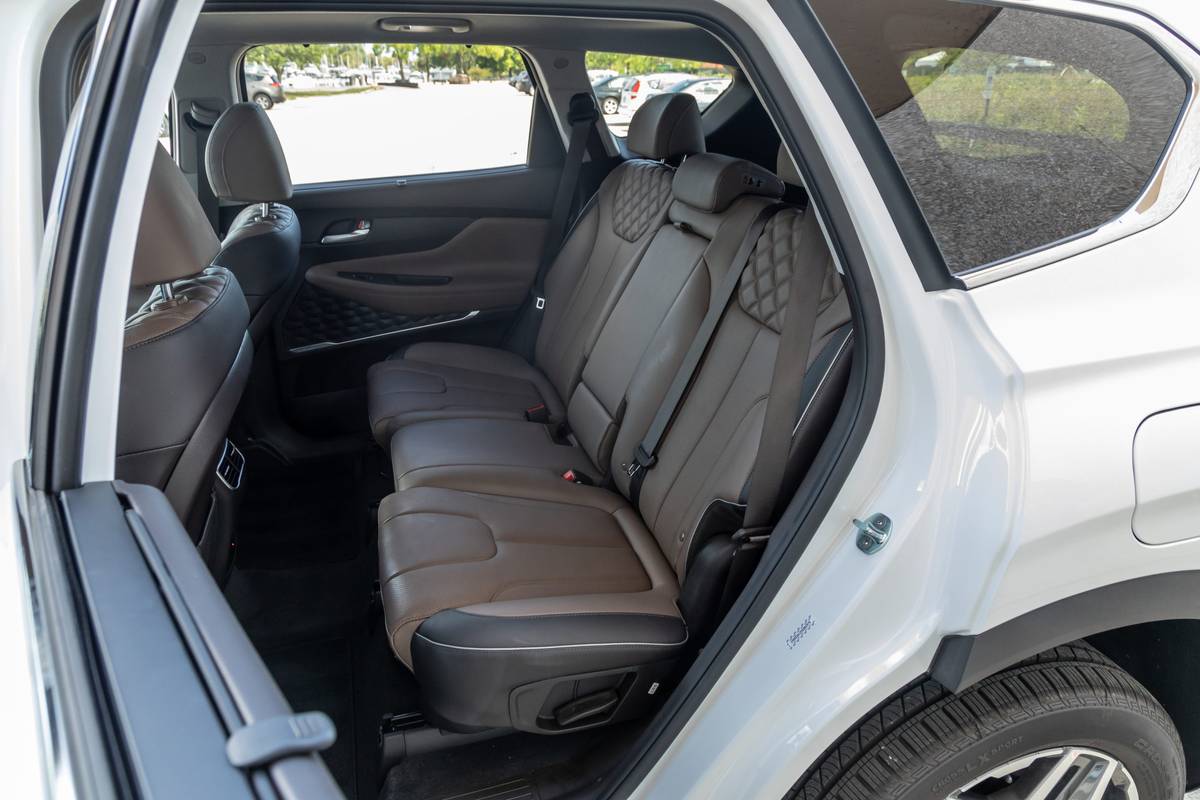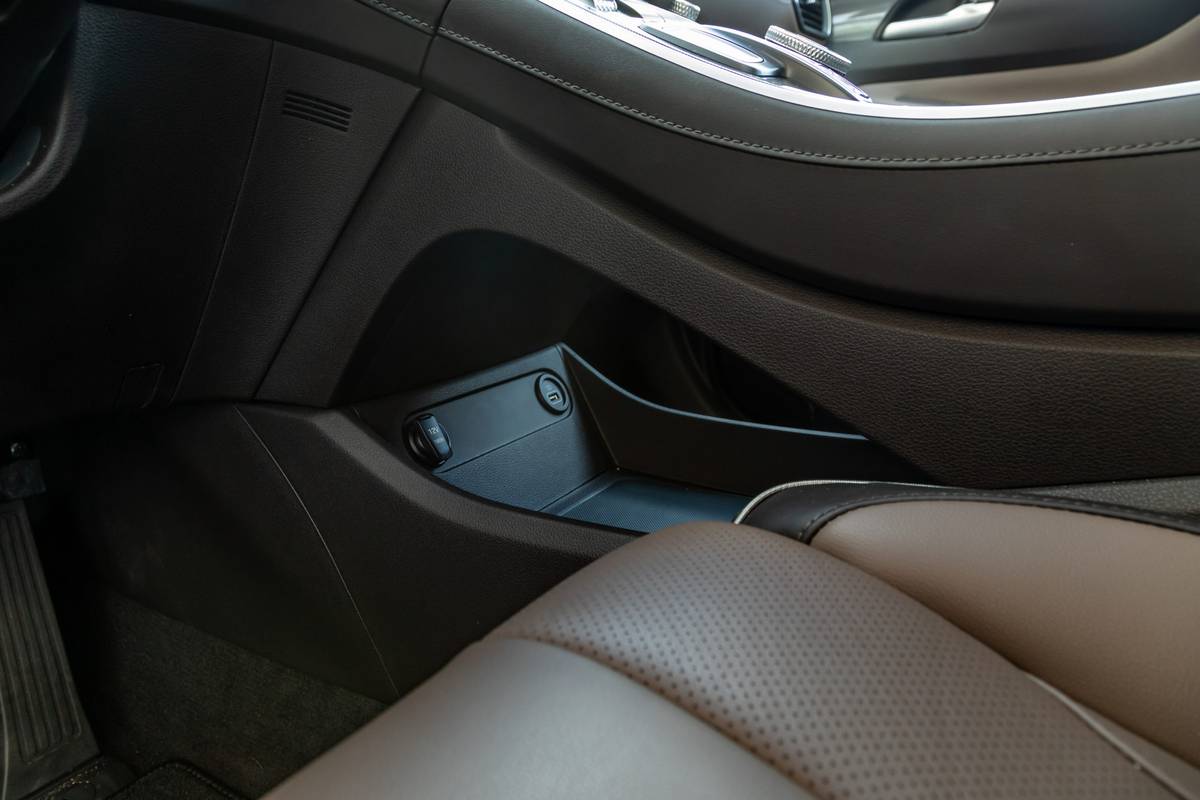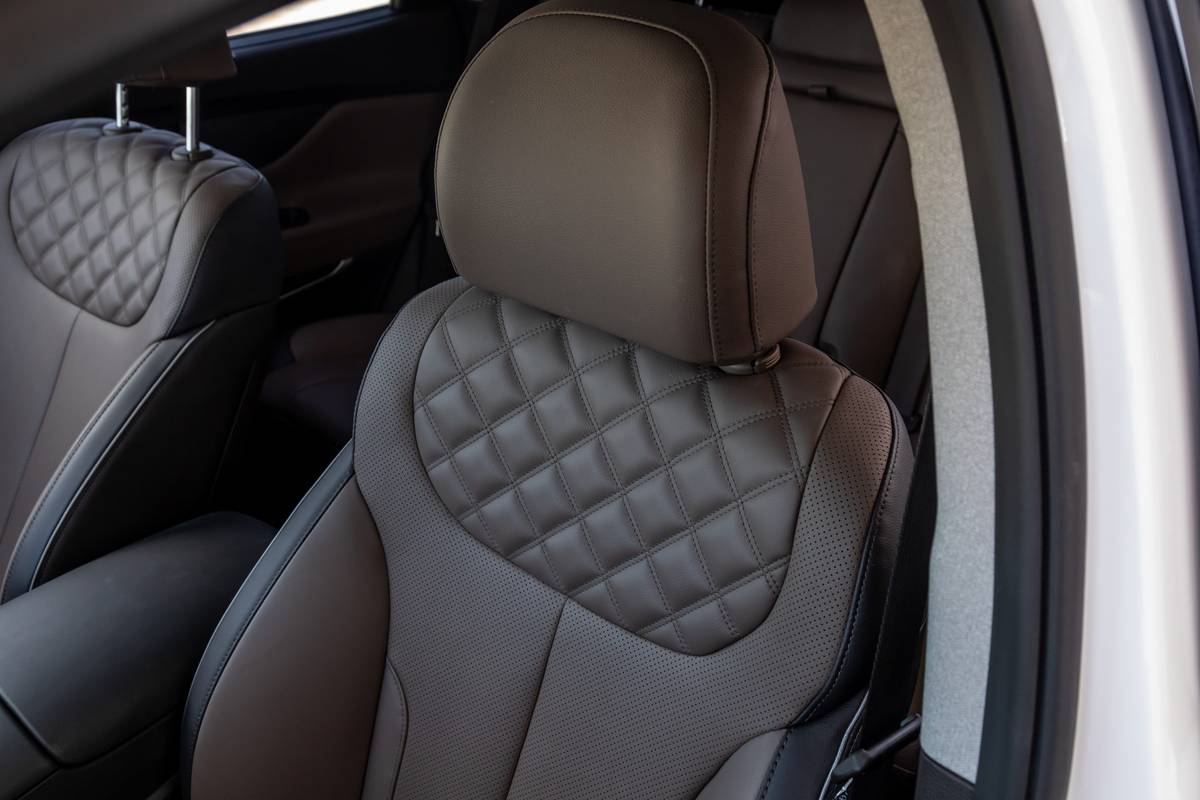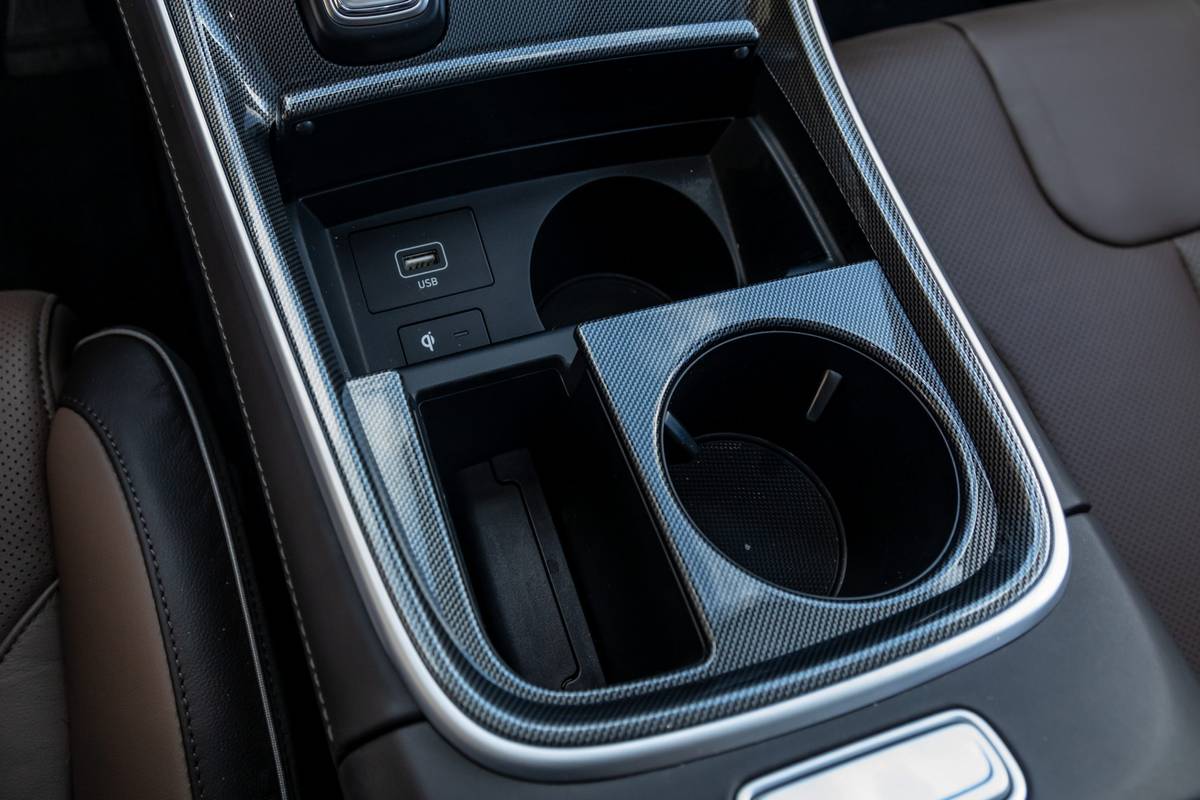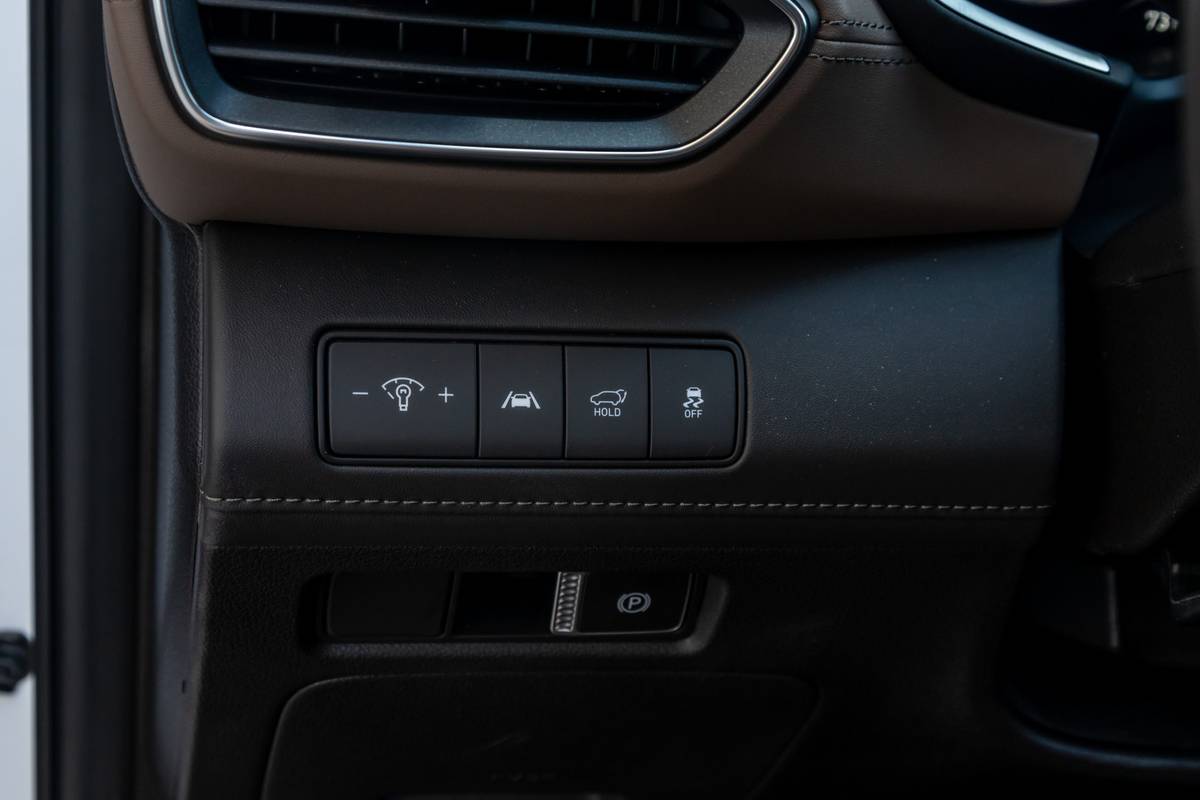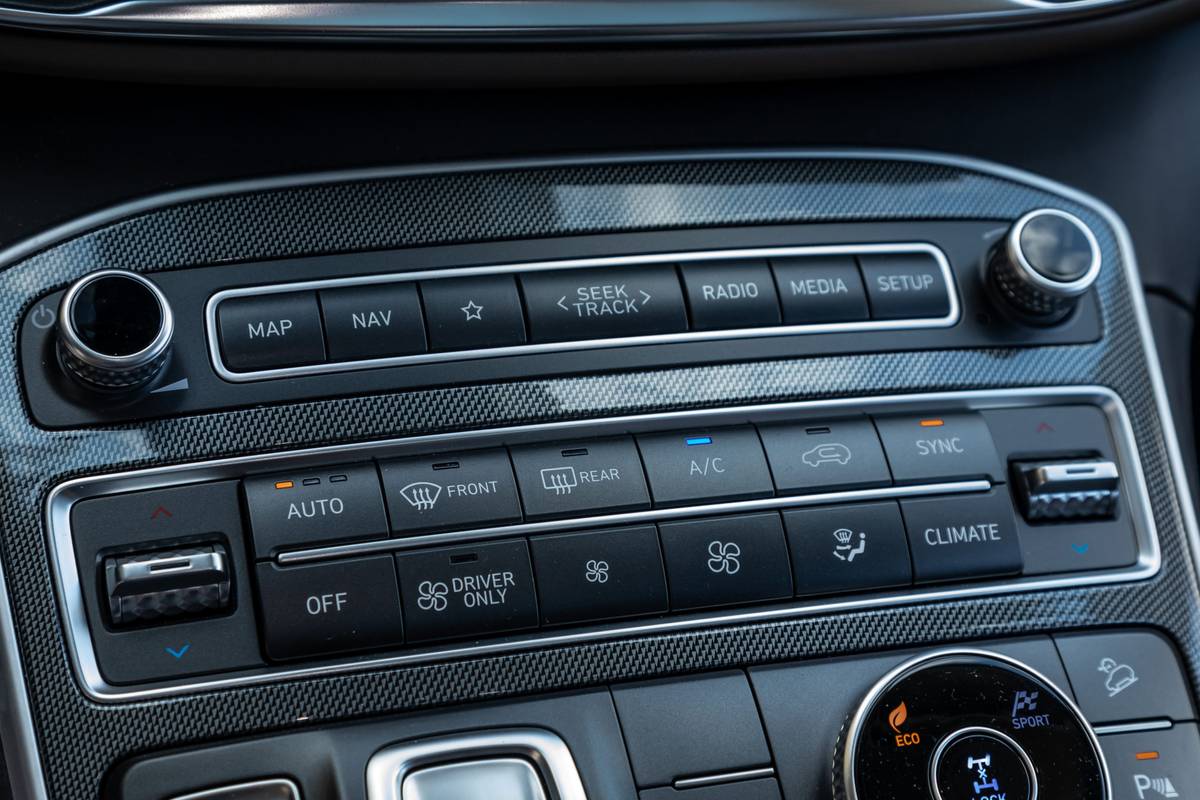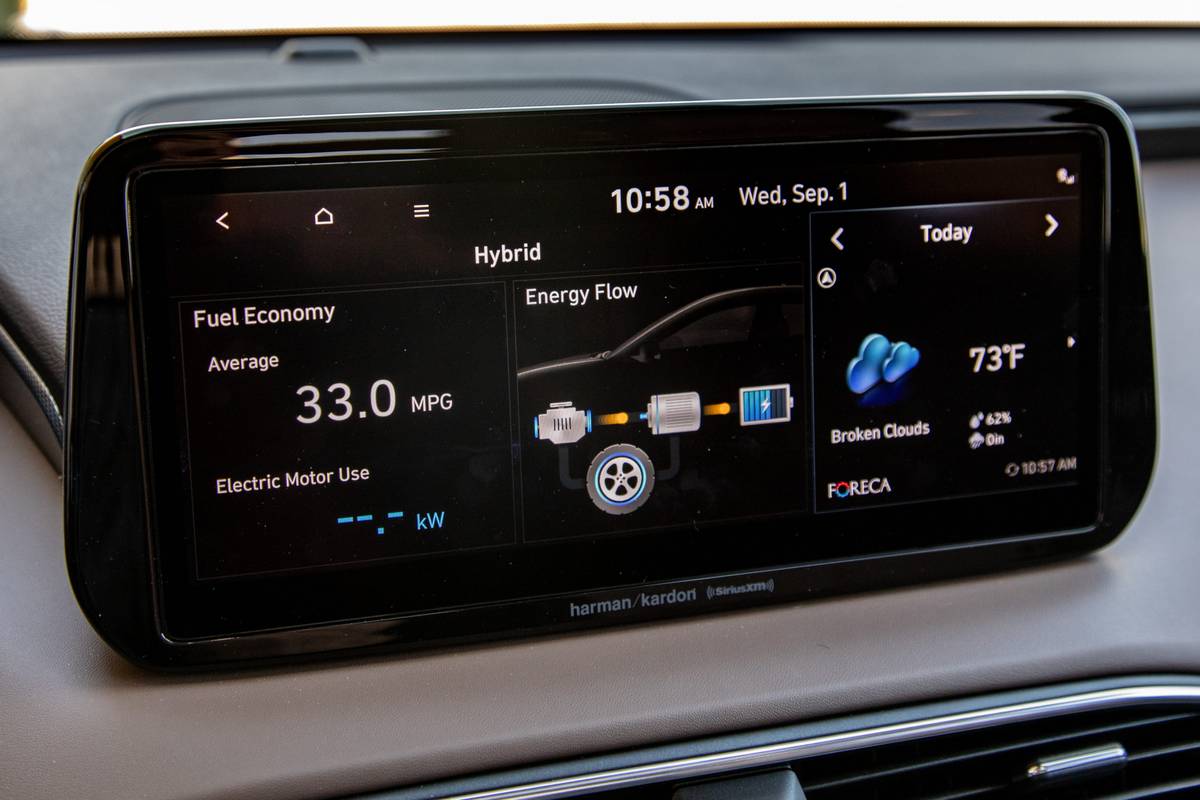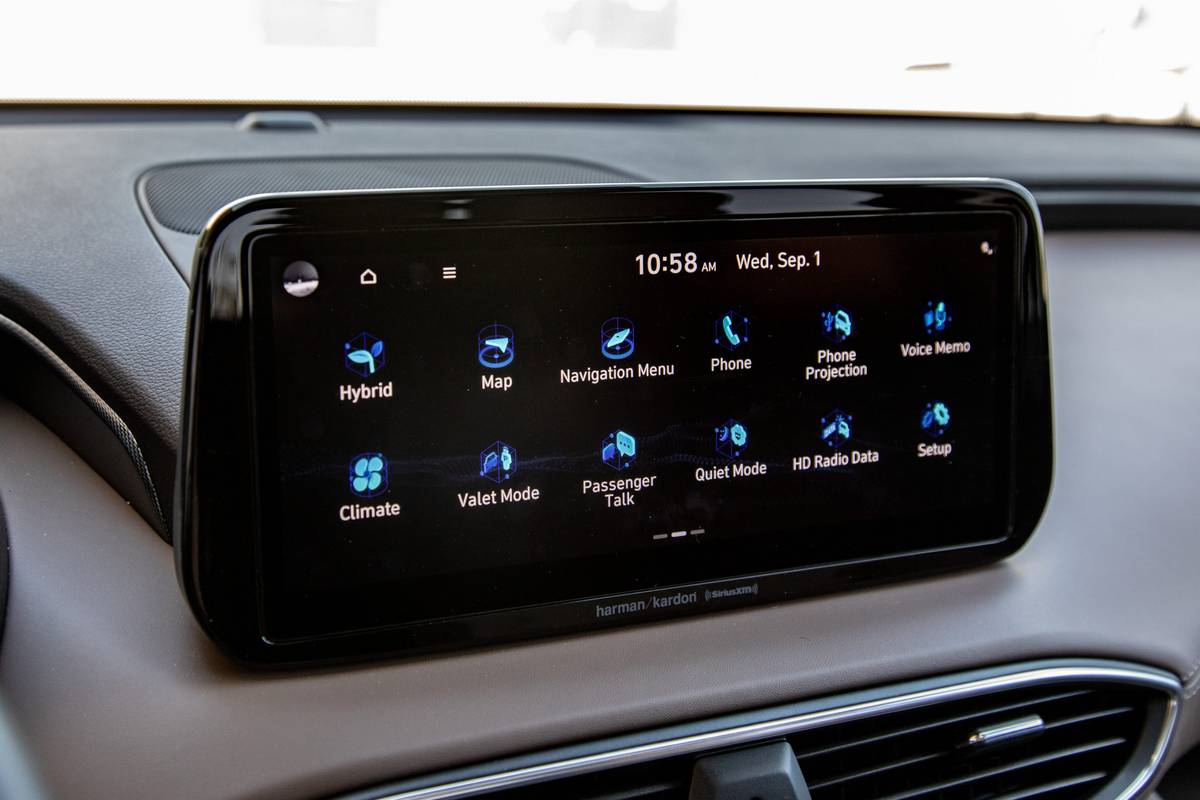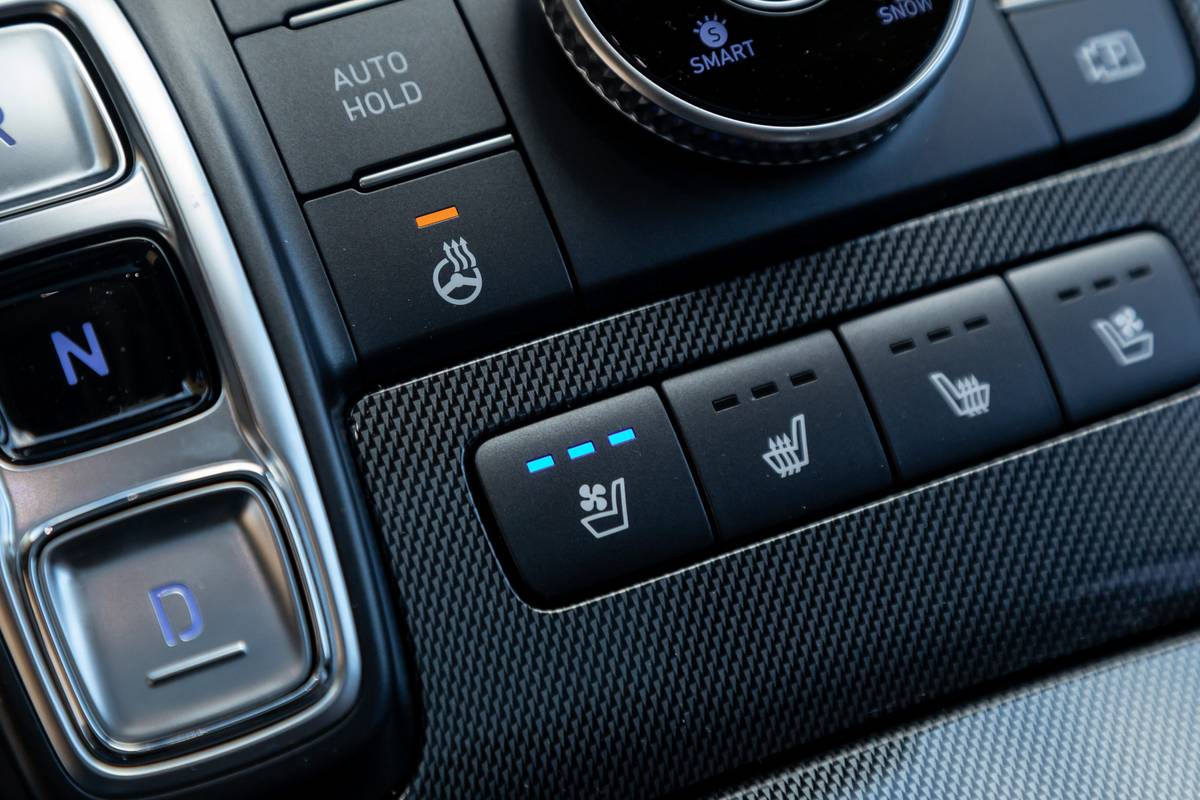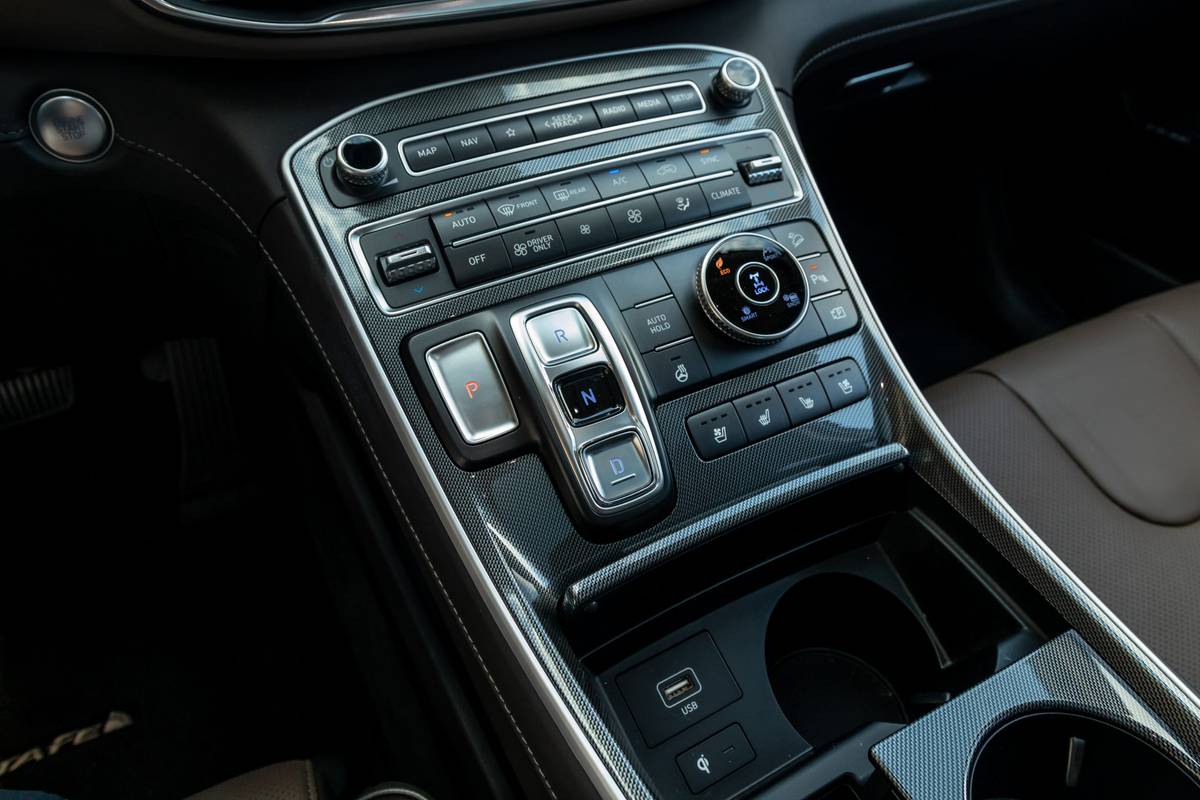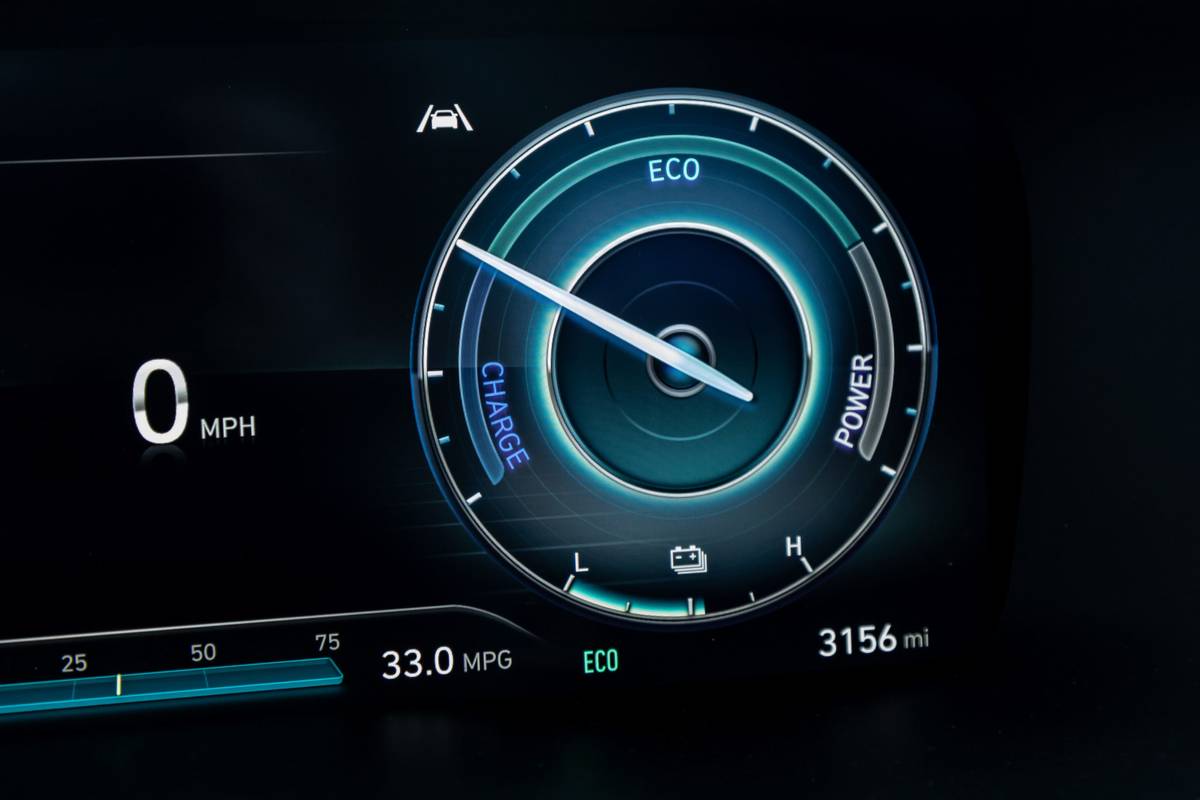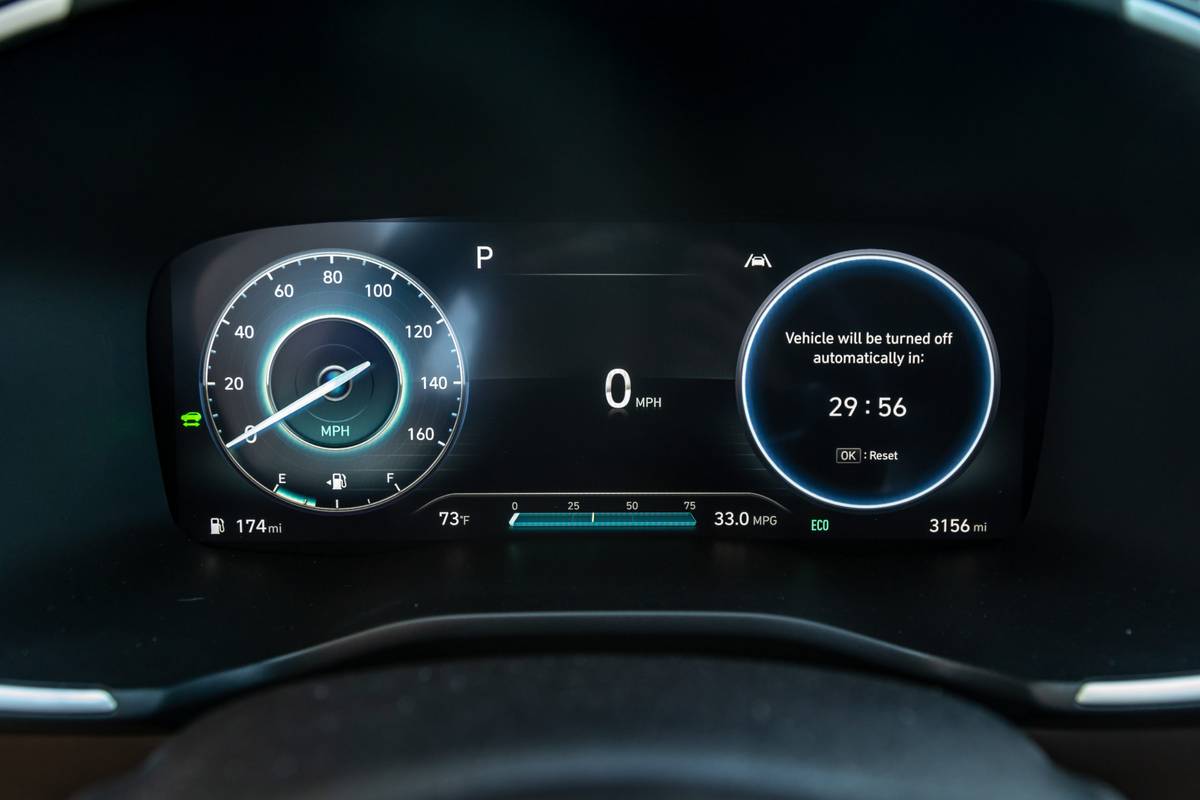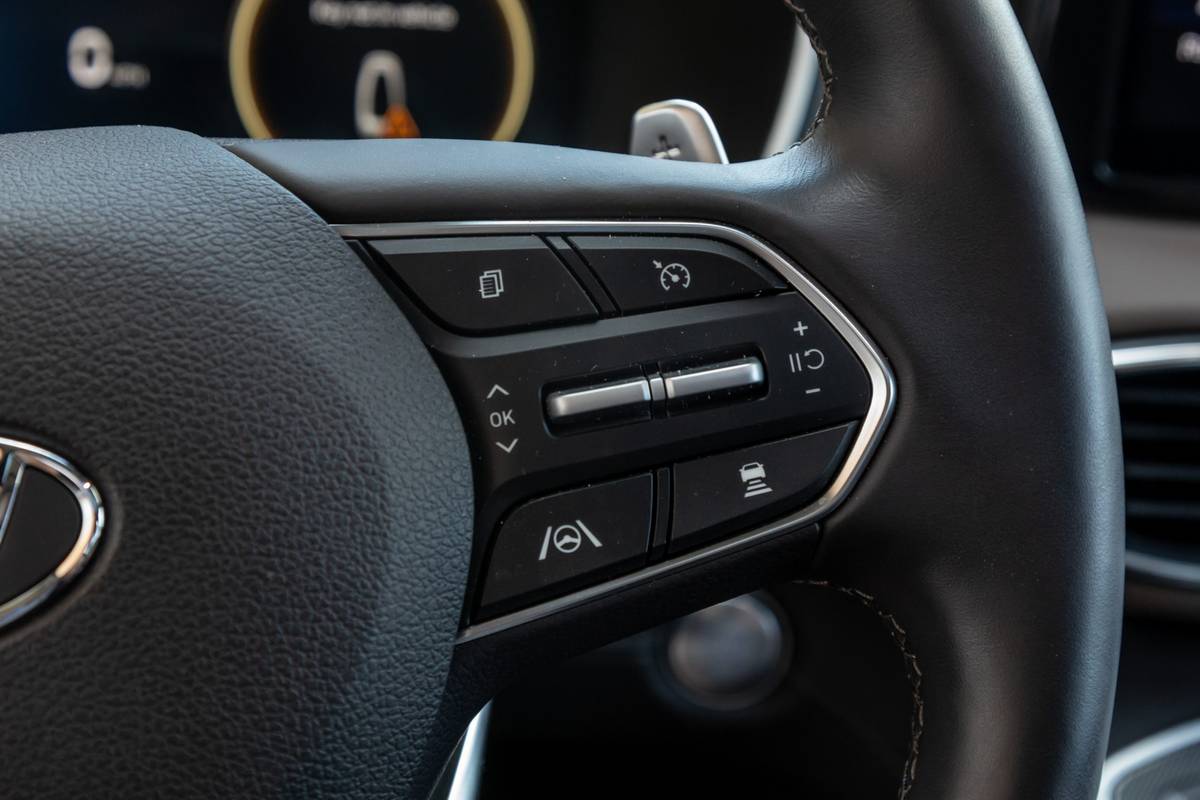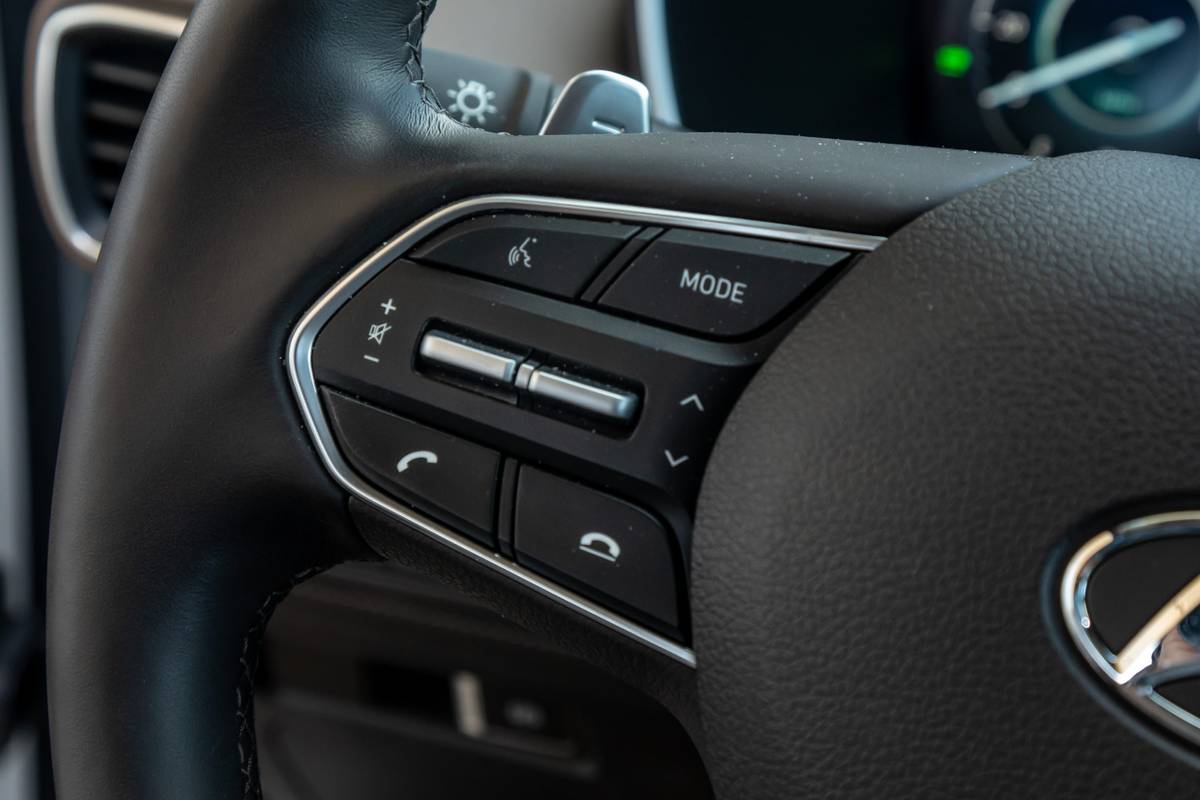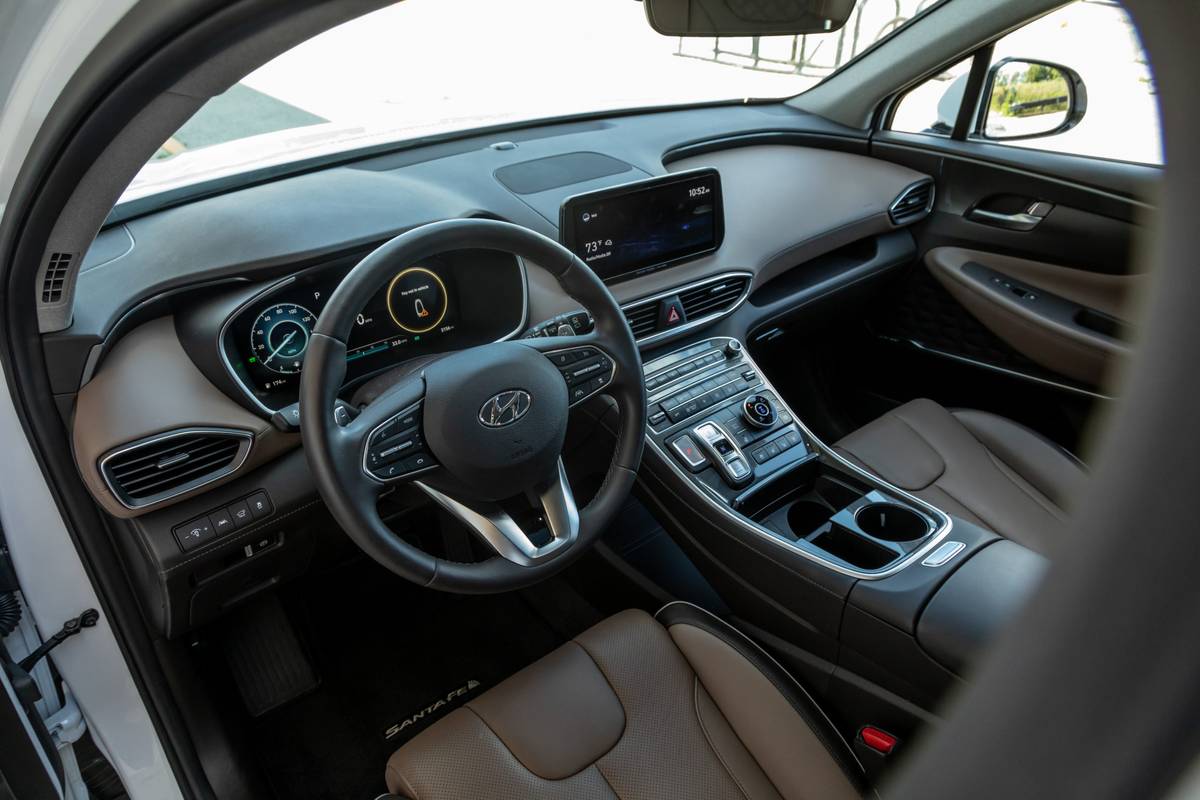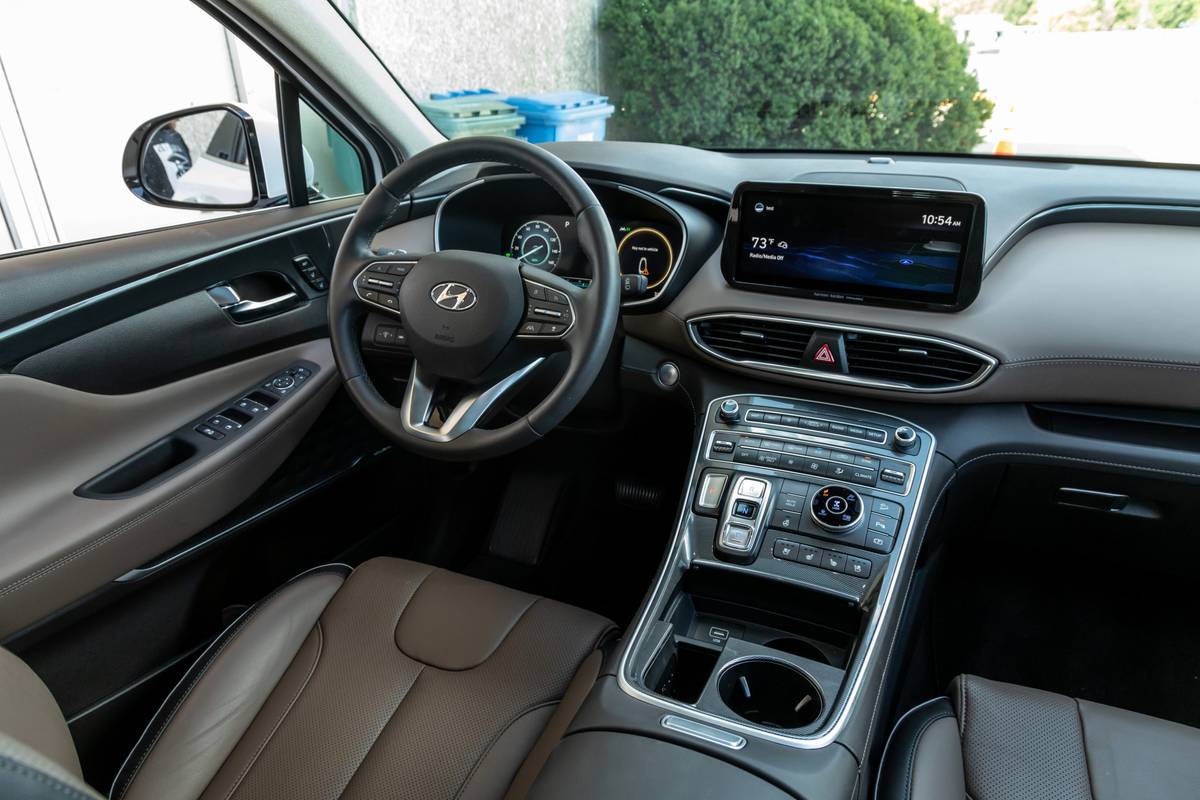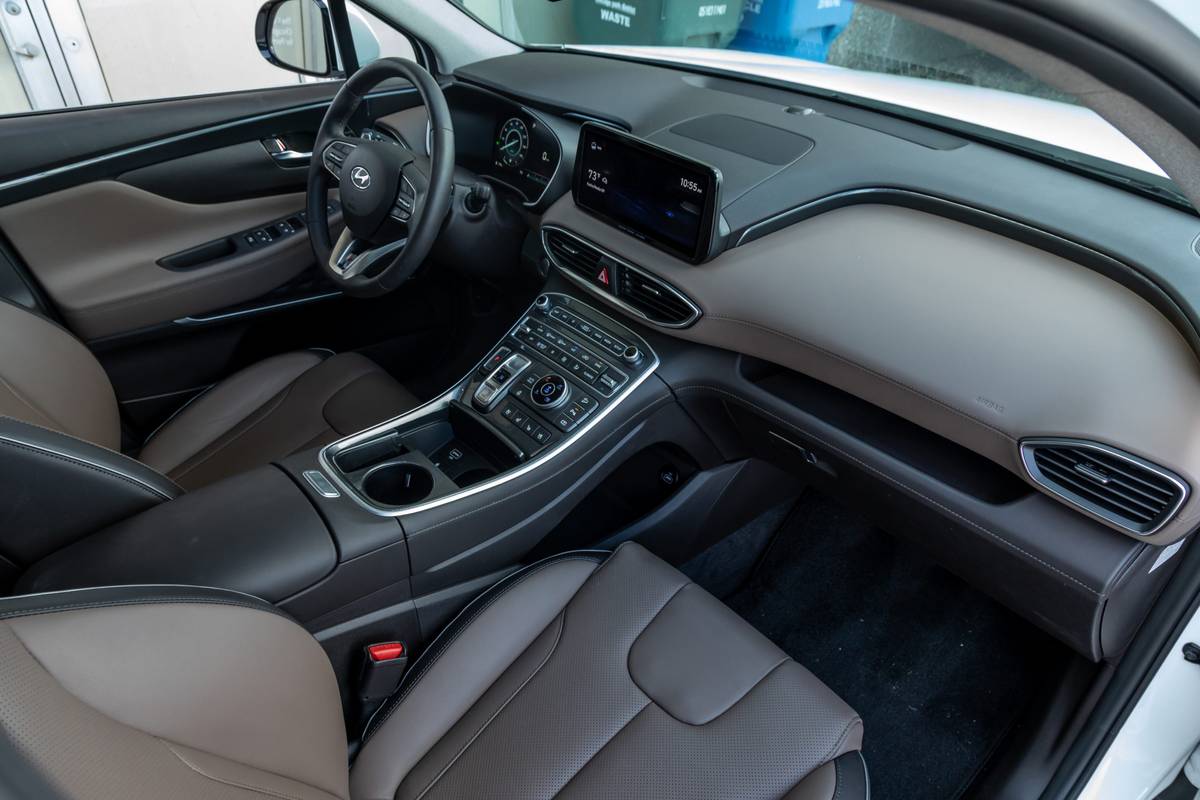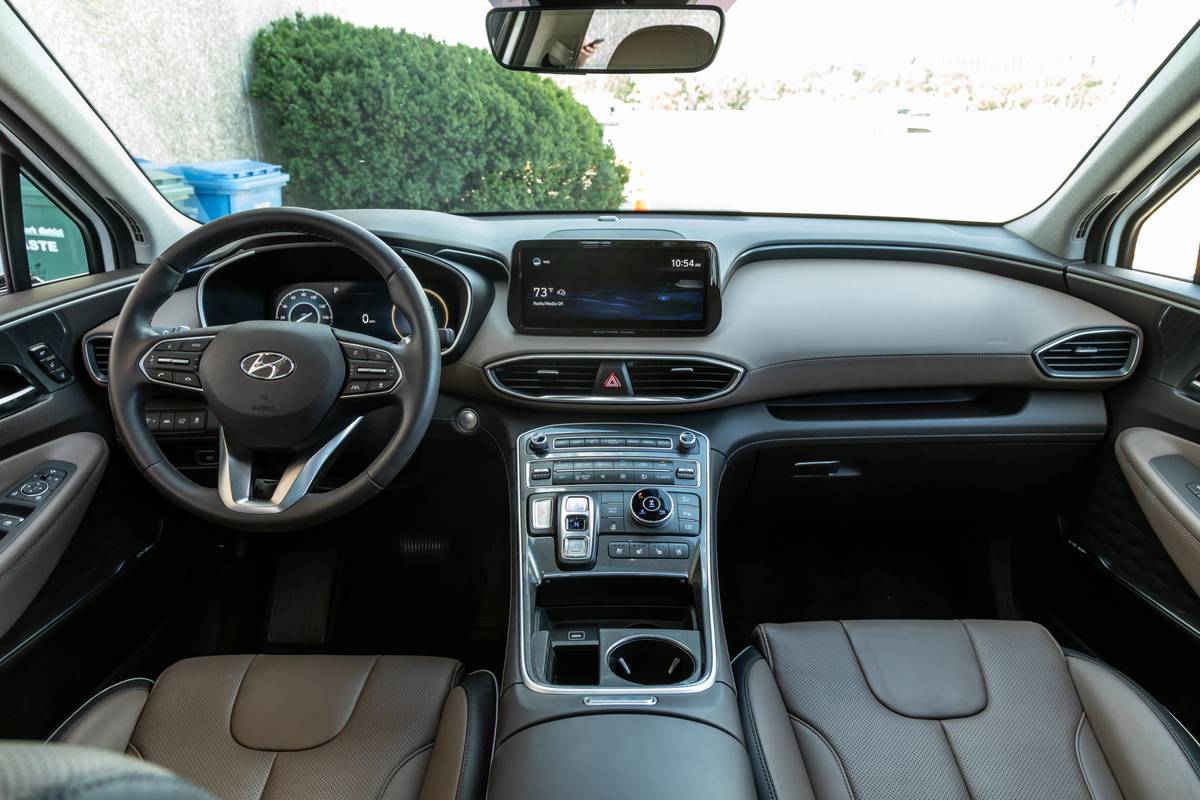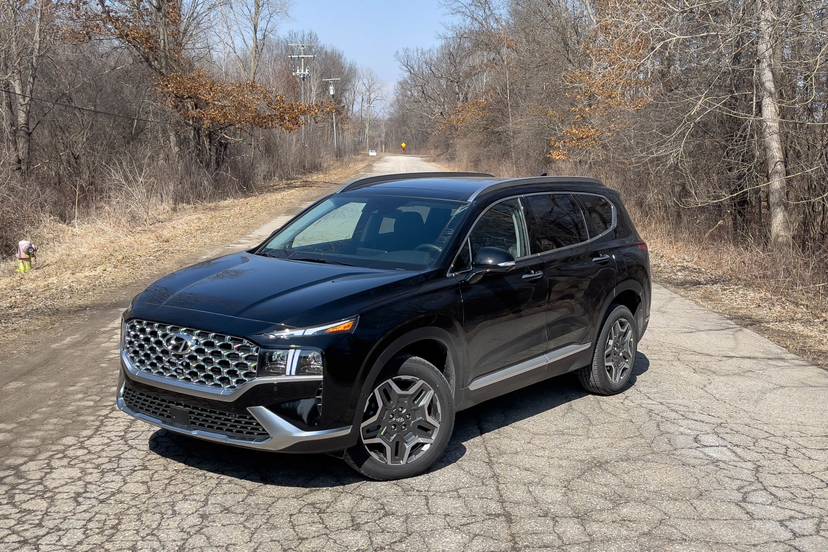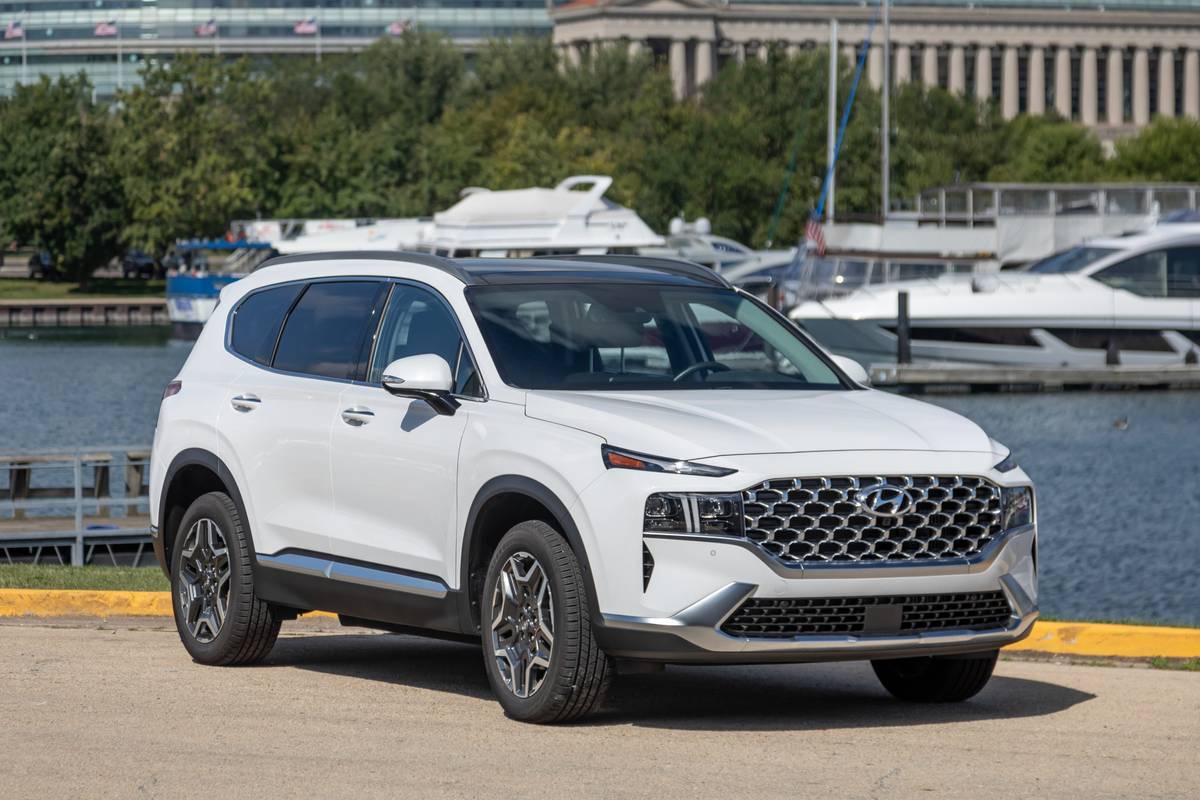
The verdict: Hyundai’s new 2021 Santa Fe Hybrid feels softer than the updated gas-only version — particularly compared with that vehicle’s new turbocharged powertrain — but it’s a welcome, fuel-efficient addition to the Santa Fe lineup.
Versus the competition: The Santa Fe Hybrid is a compelling choice in a growing field of larger fuel-efficient SUVs, but its lack of a third row or a more luxurious Calligraphy trim level may hold it back.
In its previous incarnation, the Hyundai Santa Fe won our mid-size SUV comparison despite its lackluster powertrain. When the South Korean automaker announced updates to the Santa Fe for the 2021 model year, we were excited to see a new turbocharged four-cylinder option that brought significantly more power and torque. But we were perhaps just as excited by the promise of new hybrid and plug-in hybrid versions for shoppers looking for a reasonably priced, fuel-efficient SUV.
I already reviewed the new conventional Santa Fe in its also-new-for-2021 Calligraphy trim level complete with that new turbo four-pot; now it’s time to do the same for the new 2021 Santa Fe Hybrid. (We’re still waiting on the plug-in hybrid version, which should make its debut as a 2022 model.)
Related: 2021 Hyundai Santa Fe Calligraphy Review: The Rich Get Richer
The Santa Fe Hybrid faces competition from its Kia Sorento Hybrid cousin and two Toyota hybrid SUVs: the Highlander Hybrid and the Venza, which has been resurrected in hybrid-only form. The Venza may be the Santa Fe Hybrid’s closest competitor given both it and the Santa Fe are exclusively two-row vehicles; the Sorento and Highlander hybrids have three rows of seats. See them compared.
You can read my review of the updated Santa Fe in the link above; this review will focus mostly on what differs about the Santa Fe Hybrid’s driving experience.
Well Then, How Does It Drive?
The 2021 Santa Fe Calligraphy I drove was equipped with a turbocharged 2.5-liter four-cylinder engine rated at 277 horsepower and 311 pounds-feet of torque. That Santa Fe impressed with its sharpness and near-sportiness, but the Santa Fe Hybrid … well, it’s hard to be impressed by placidity, isn’t it? And that’s what you get: a no-fuss, no-frills driving experience.
Instead of making nearly 300 hp, the Santa Fe Hybrid makes 226 system hp with its 1.6-liter turbocharged four-cylinder engine, 59-hp electric motor and 1.49-kilowatt-hour battery pack. Where the gas-only Santa Fe uses either an eight-speed automatic transmission or an eight-speed dual-clutch automatic, the Hybrid uses a six-speed automatic. The Hybrid also comes standard with all-wheel drive, while the gas version gets front-wheel drive standard.
The Hybrid won’t produce any impressive feats of acceleration, but it won’t frustrate, either. Acceleration is brisk enough, and unlike the smaller Tucson Hybrid, there’s not much hesitation when you step firmly on the gas. It doesn’t have a lot of power to give, but what the Santa Fe Hybrid has, it gives willingly.
Some hybrids have issues with awkward braking response, but I didn’t notice a significant difference between the Santa Fe Hybrid and the gas-only version. There’s a bit more sponginess to the pedal feel in the Hybrid, but its regenerative brakes didn’t dampen my driving experience.
Neither did the lack of an electric-only driving mode. Those modes are usually very limited in traditional hybrids anyway, providing minimal gas-free driving. The Santa Fe Hybrid has more traditional driving modes, though they mostly just adjust accelerator response: Eco makes things more sluggish and Sport sharpens things up slightly, but neither makes a big difference.
I didn’t get to take the Santa Fe Hybrid on a lengthy family road trip like I did the Sorento Hybrid, but in my time driving in and around Chicago, I saw fuel-economy readings in the low 30s — impressive for an SUV the Santa Fe’s size. The EPA rated the Santa Fe Hybrid at 36/31/34 mpg city/highway/combined in its less-equipped Blue version, 33/30/32 mpg in better-equipped (and, thus, heavier) trims. That trails the Venza’s 40/37/39 mpg rating, but the Santa Fe is larger, more powerful and significantly roomier than that car — and a few hundred pounds heavier. The gas-only Santa Fe only managed a maximum rating of 25/28/26 mpg.
Not as Nice Inside
Where the Santa Fe Hybrid comes up short against its gas-only sibling is its interior quality — a place I already had some complaints. The Santa Fe Calligraphy is the top of the gas-only Santa Fe lineup, while the Hybrid’s top trim is a lower trim level, the Limited.
The Calligraphy has a faux-suede headliner and Nappa leather upholstery that’s nicer than the leather in the Limited. The lack of those nicer materials in the Hybrid we drove made the hard plastic used elsewhere in the cabin stand out even more; it could use an extra bit of sprucing up.
The rest of the interior is nearly identical between the two Santa Fe versions. There’s still the Palisade-lite angular center console design (and its physical controls), and that console is still wide enough to annoy drivers who enjoy a bit of manspreading while behind the wheel. At least that makes for an equally large storage space below the console, too.
Aside from some hybrid-specific details — like a hybrid power meter instead of a tachometer in the digital instrument panel and a few specific pages on the touchscreen — tech remains the same. The 10.25-inch touchscreen has the same clear graphics — and the same quirk of having only wired Apple CarPlay and Android Auto (the smaller 8-inch touchscreen has wireless connectivity for both). Even more frustrating: Models with wireless smartphone connectivity don’t have wireless charging, while ones without wireless connectivity do.
Safety
Safety features in the Santa Fe Hybrid mimic the gas-only version, and advanced tech like Hyundai’s blind spot camera system and a Smart Park automated parking system are also available.
According to the Insurance Institute for Highway Safety, the 2021 Santa Fe is a 2021 Top Safety Pick, but it falls short of the highest status of Top Safety Pick Plus due to varied headlight ratings (Limited and Calligraphy models get a good rating and thus qualify for the award, while lower trims’ ratings vary by build date). The National Highway Traffic Safety Administration gives the Santa Fe Hybrid a five-star rating.
More From Cars.com:
- 2021 Hyundai Santa Fe Hybrid Puts Premium Price on Being Green
- 2021 Hyundai Santa Fe Hybrid and 2022 Santa Fe Plug-In Hybrid Add Efficiency to Updated Santa Fe
- Hyundai Santa Fe: Which Should You Buy, 2021 or 2022?
- 2022 Hyundai Santa Fe Gets More Aggressive Looking With New XRT Appearance Package
- Is the 2021 Hyundai Santa Fe a Good Car? 5 Pros and 4 Cons
Which Santa Fe Is Right for You?
The Santa Fe Hybrid might cost more than a comparable gas-only Santa Fe, depending on configuration and options, but the gas-only Calligraphy is the most expensive Santa Fe on the market. Including $505 in cosmetic options and a $1,185 destination fee, our test Santa Fe Hybrid had a sticker price of $41,640. That’s slightly less than a comparable gas-only AWD Santa Fe Limited but more than a FWD version. It’s also less expensive than the almost $44,000 Santa Fe Calligraphy we tested earlier in 2021.
The Hybrid sacrifices a fair amount of towing capacity — it can pull 2,000 pounds, compared with the gas version’s 3,500 pounds — but its fuel efficiency, standard AWD and roughly comparable price might make it a better choice for buyers who don’t need that extra towing capacity or horsepower. With that in mind, the Santa Fe Hybrid is a great choice for SUV shoppers who don’t need a third row of seats — and it might just be the best all-around Santa Fe for sale.
Cars.com’s Editorial department is your source for automotive news and reviews. In line with Cars.com’s long-standing ethics policy, editors and reviewers don’t accept gifts or free trips from automakers. The Editorial department is independent of Cars.com’s advertising, sales and sponsored content departments.










